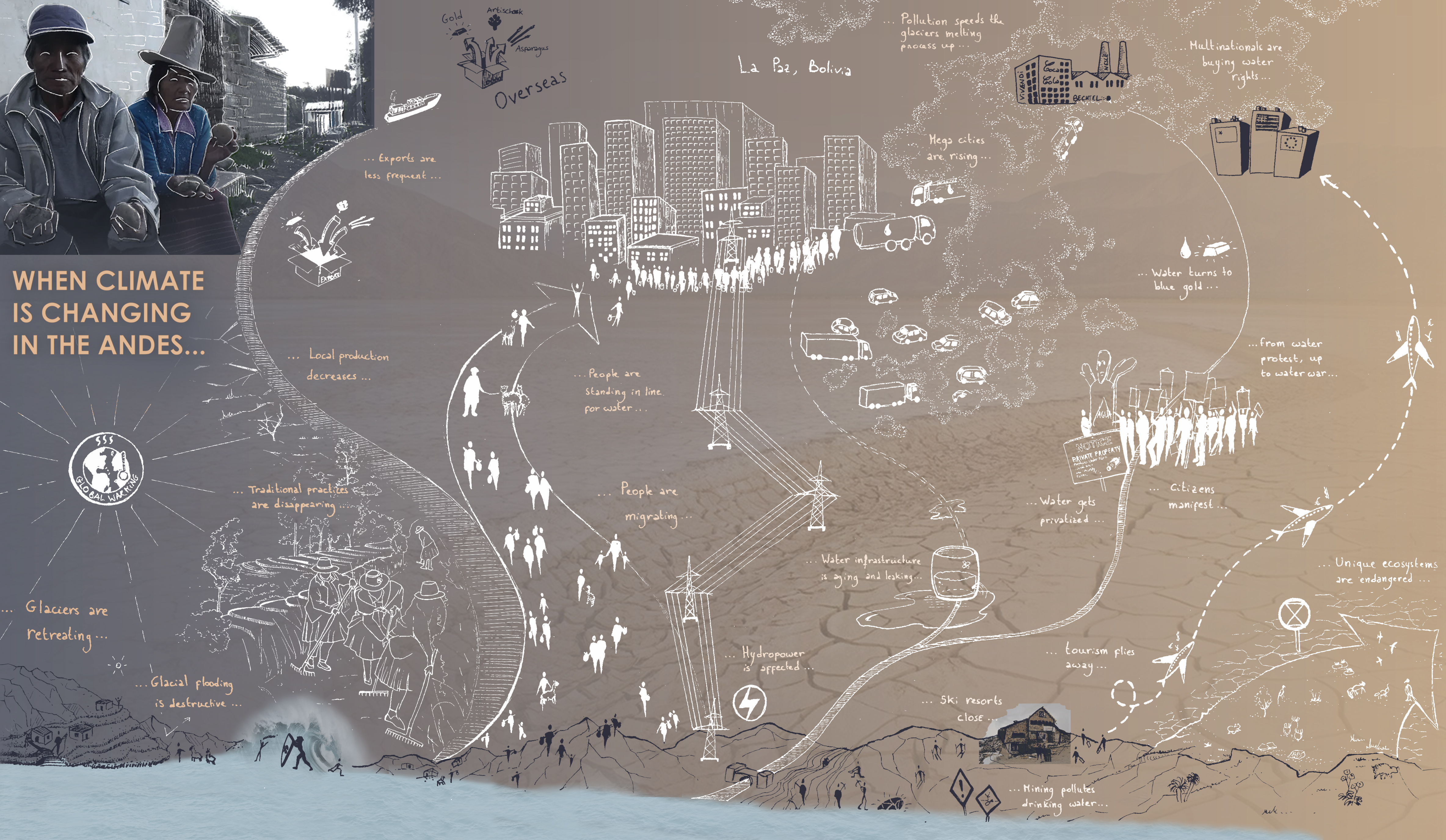
MELTING GLACIERS IN THE ANDES - Repercussions on the regional water supply
Landschaftsarchitektur und Entwerfen - Emerging topics in Landscape Architecture
Leibniz Universität Hannover
In the drought prone regions of the Andes, glacer melt contributes to a crucial part of freshwater's availabity in dry season. Climate change puts these water storage systems at risk. Because of ther all-year warm exposition, tropical glaciers are particulary vulnerable to global warming. The accelerated melt rate leads at first to an increased streamflow, which often causes flooding, landslides and erosion. The peak water of many glaciers will be soon be reached and the amount of freshwater will begin to decrease.
A 'timeline' of retreating glaciers and melwater guides the reades through the evolution of water shortage and its repercussions on the life of affected locals and through their eyes. A three-case studies comparison shows how different Andean countries are affected and react towards water scarcity. It is predicted that 97% of the tropical glaciers are doomed to disappear by the end of the century. More than ever, versatile measures need to be taken to ensure continuous and sustainable water suplly over time.
Different approaches can be taken to prevent or at least slow down glaciers mealting process. Whereas some focus on the glacial retreat's short-term repercussions, others try out inovative ways of water management and search for alternative sources, in order to fight water scarcity even once glaciers will be completely gone. Some promising initiatives have shown that interdisciplinary, multi-purpose and participative projects are key elemnts in attempting to guarantee Andean water supply for generations to come.
